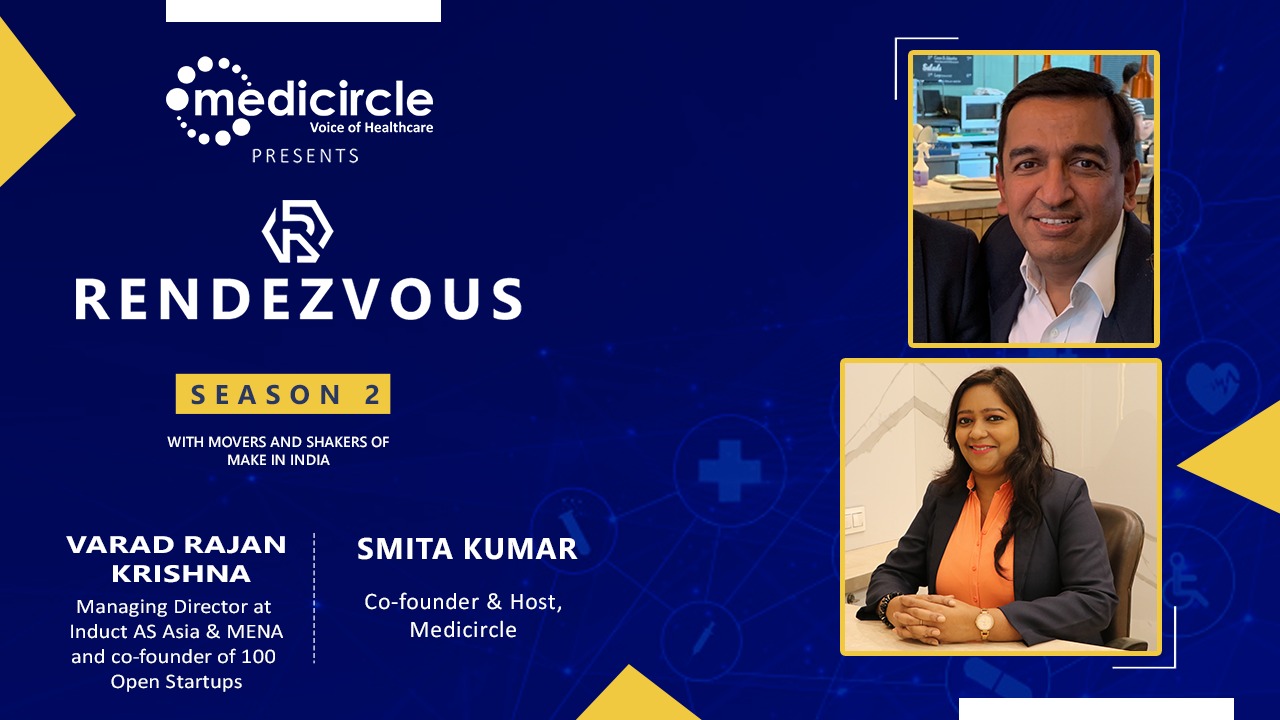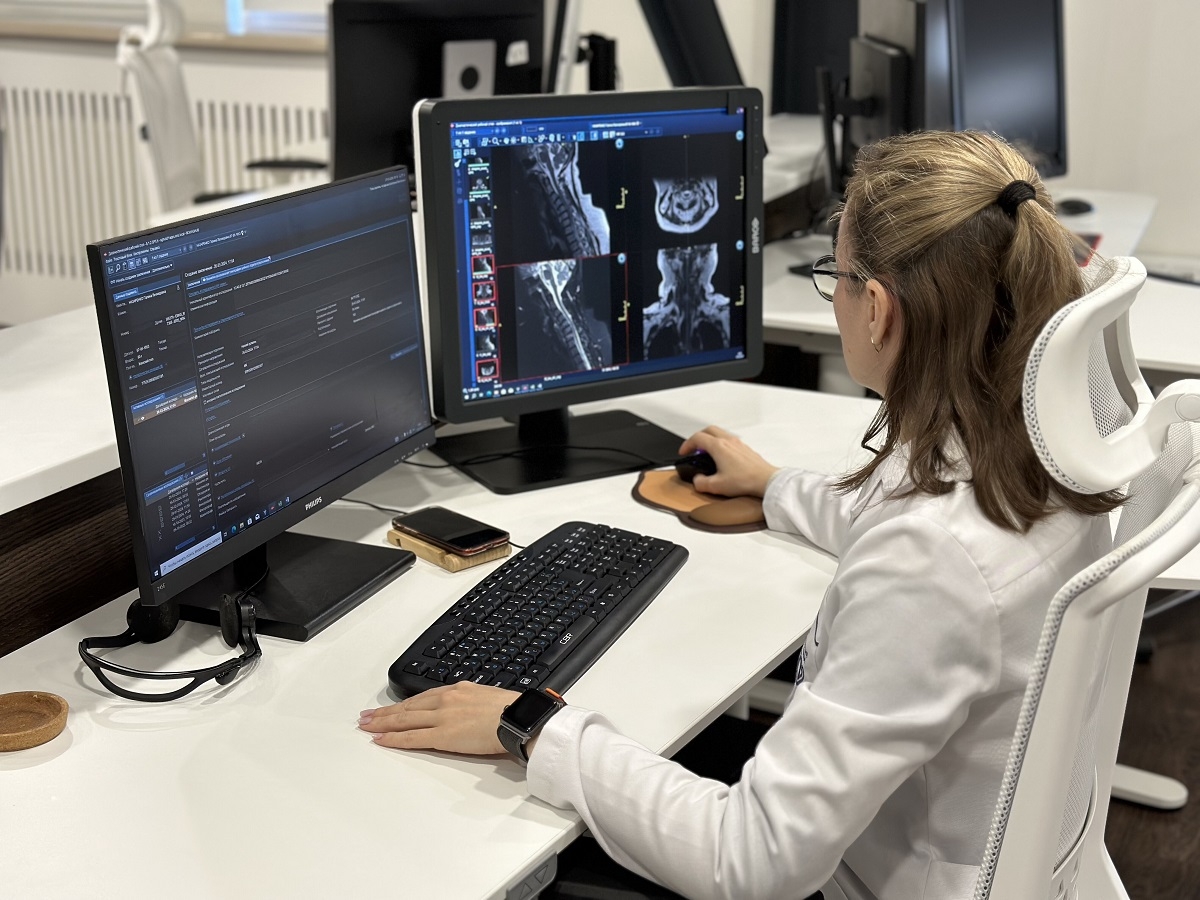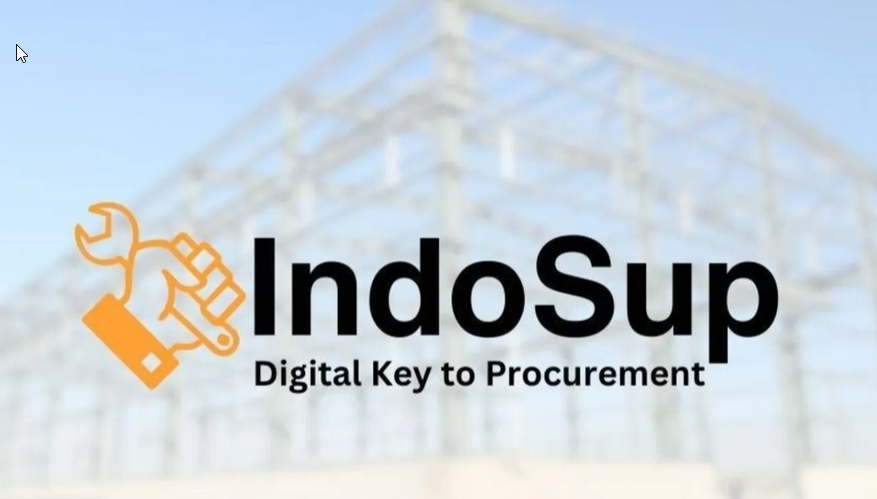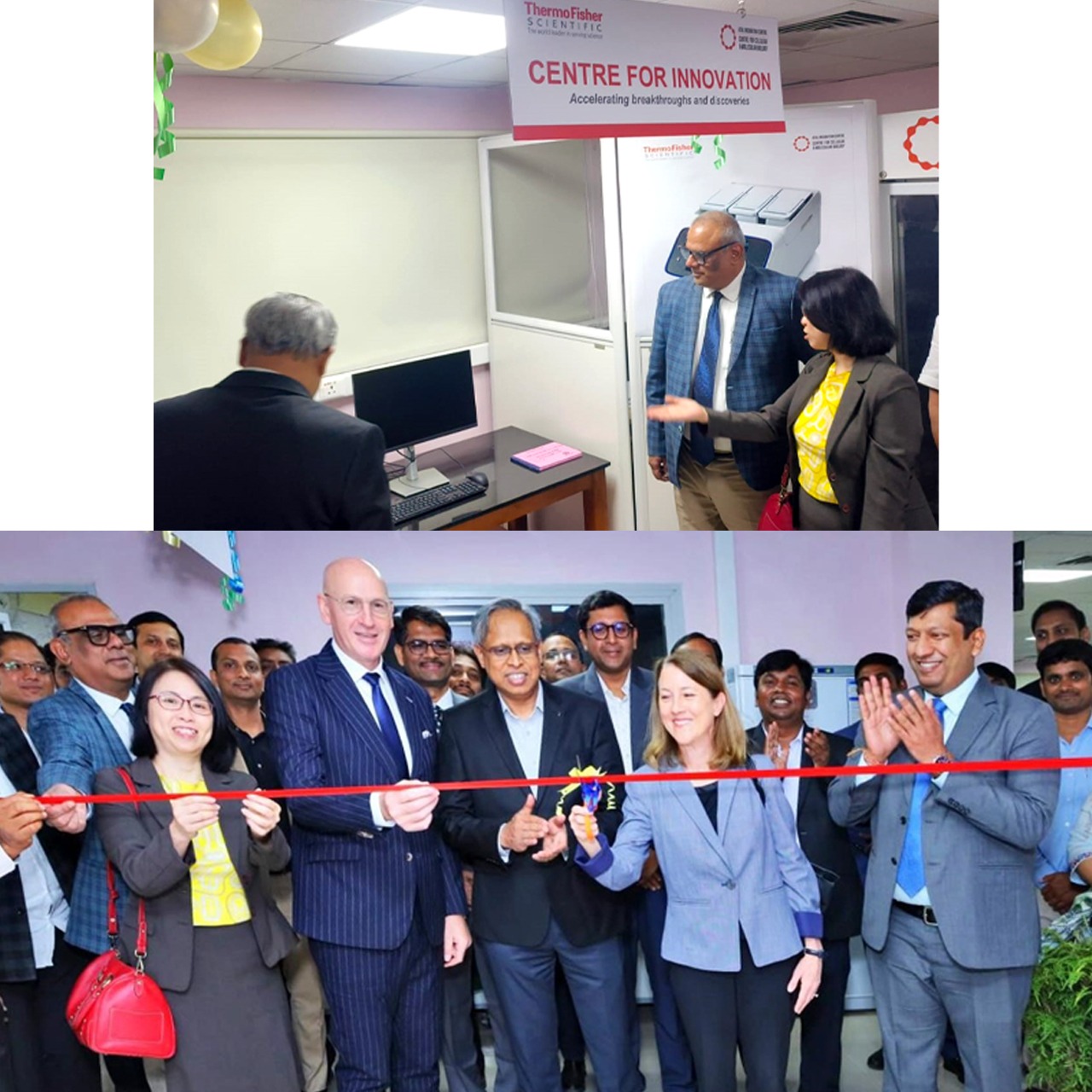The process of translating an idea or invention into a good or service that creates value or for which customers will pay is called innovation. The purpose of this is to come up with new ideas and technologies that increase productivity and generate greater output with the same input. In business, innovation often results when ideas are applied by the company in order to further satisfy the needs and expectations of the customers.
Varad Rajan Krishna, Managing Director, Induct AS Asia & MENA, is also a co-founder of 100 open startups which is a movement that connects Start-ups, entrepreneurs, and scientists with the Innovation Strategy of large companies looking for solutions and opportunities for the challenges of the society and the market. He is also one of the Board of Directors of WinAMR, wherein he drives the overall strategy for growth of the company.
Induct AS was started in 2007 with the pursuit of improved innovation. The Induct culture has innovation in its DNA and it is based on values that encourage collaboration, honesty, and being helpful with one another to make a positive impact on the world.
Entrepreneurial role ranges right from being a janitor to the CEO
Varad explains in-depth how his entrepreneurial journey has been, “It has been a great journey. Like most of us start studying either medicine or engineering then we go to work for somebody, so it was a natural process in those times. There wasn’t much awareness about entrepreneurship, so it was like everybody was looking for a job. As you complete your education, you are programmed to find a good job and nobody looks at creating something or building new things. In my case also it happened the same way, I had to take a job because of social pressures and I had no clue that I could start something of my own. So I am just looking back at those 25 years, but the things have changed now, there is so much awareness. I worked for a large corporation in certain areas, gained expertise, knowledge, and then I set up my own organization and then built it up into a 900 people company, that was my first startup. After that I listed it on the Bombay Stock Exchange, 50 times oversubscribed, and two years later I sold this company. And thereafter I’ve been through a series of such startups and then selling to a large company or merging with it, finding an exit, etc. So I have been through these kinds of journeys. When you look at the experiences, in the case of working for the big company as an employee you don't have to worry about your salary, you don't have to worry about what’s going to be the next thing that is going to happen to you, because everything is taken care by the company, it is kind of an edge or we can call it as an insurance against all financial insecurities. Whereas moving to the Entrepreneurial role, it was totally different because you have to do everything right from being a janitor to the CEO, you have to do everything, and at the end of it your payday doesn't come, you know it's like delayed gratification, because many times you are depending on some investor or you are depending on some customers revenue and there is nobody to fund you, like when you used to work for a big company, somebody else will pay your salary so you can discover later that the CFO or somebody related to finance in the company, their role was to borrow money, if the company didn't have money to pay your salaries. This is how many companies work, and in the case of an entrepreneur, you have to do everything on your own, so if for eg. you have to pay next months salary, you have to start planning now itself, how it's going to come, from where it's going to come, etc, and you can't give excuses to your employees that you know I don't have revenues, I don't have any funding, you cannot say that because the work starts with you and stops with you, so this is the biggest challenge when you compare that life and this life. Later I have learned that this has also got a scientific explanation I need to tell you, So the corporate way of life, or you work for somebody is called as ‘casual approach’ casual as in you have a structured process to do everything and there is a way to do it, etc, whereas when you go to start your own, it's called ‘effectual approach’ that means you have to do everything, there is no procedure, no process, if there is anything at all you have to break it down, and you don't want to create structures that are going to delay decisions so that there is a complete 180-degree shift between what's called the casual and the effectual. That is a very important thing, which I learned later that's what an entrepreneur’s life is all about,” he says.
To create an ecosystem for every sector
Varad explains, “We were building open innovation communities across sectors, to begin with, healthcare, then we went into public systems, education, large enterprises, and humanitarian causes, so these were the sectors we were addressing. And one of the communities I have built-in Open Innovation Communities was to connect startups and researchers and scientists with large corporations and SMEs so that was something we started in 2007, and with the support of Dr. Andrew Chespro who teaches at the Harvard School of Business, Berley, we started it and he was the evangelist. Those were early times when the word ‘startup’ wasn’t even well defined, and these were the times when we were going about and talking to other organizations to build your own, pretty much as you talk to the board like the startup that you created, we wanted to create an ecosystem for every sector,” he says.
Start of ‘The Healthcare Innovation Indicators’
Varad throws light on how ‘The Healthcare Innovation Indicators came into existence’, “So it will be interesting for you to know that one of the first open innovation communities we created was for healthcare, and since this is an interview on healthcare so I thought it would be very pertinent for you to know what we did was, first we’d go to a hospital. So I remember the first one we went to was Aalberg in Denmark and so let us say they had about 50,000 employees at that time, so we asked them the questions like ‘What do you do when there are ideas coming from different employees?’ so this is a very simple question, many organizations used to have something called the suggestion box, so you can put your idea there, and somebody will review it, and if it's worth, someone will implement it, probably you may get a good award as well, might be a good recognition if your idea is really good. So this is the old way of doing it, so imagine you set up the whole thing in an electronic system, a digital system where you can run this kind of a challenge, problem statement like you know ‘How to increase sales?’ or ‘How to bring new customers?’ or ‘How to satisfy customers?’, ‘How to motivate employees?’, so you can run many challenges within the organization. And the ideas can come from Individuals that are working in the organization, and the scorecard in the system that is set there, the discussion being in process, you can actually find out the best 5 ideas that are contributed, and the organization can actually implement it after they implement it you can also see 6 months later what is the impact of it. So this is one of the things, I'm just trying to tell you in a simple way as to how we started it, then it became very complex, so much that you can say even the complex of most complex procedures that happened, like knee replacement or a heart procedure or things like that, everything you can actually share in the community so that other doctors, or other communities in the world, can also pick it up and implement it. So this is the kind of, you can say the knowledge sharing system, expertise, best practices, just name it, so it became bigger and bigger, so much that we created something known as ‘The Healthcare Innovation Indicators’ because overtime we had implemented in so many hospitals all over the world, so we have the study of the history of data and all that, so we came up with something called Healthcare Innovation Indicators that means if the hospital ticks against these 40 parameters then you can say this hospital is innovative, if not you have those gaps like 10 gaps you have, then you have to work on addressing those gaps,” he says.
How did ‘100 Open Startups’ got its name
Varad explains in brief, “So what we do is we create an ecosystem, so take for an example of the healthcare ecosystem, what is it? it is Hospital, of course, Government, Public regulators what not then you have Universities, Research Institutions, startups, the large industries like the GE’s of the world, and so on. So you bring everybody together on one platform so that, internally the challenges are there you run it and get the ideas from the employees you can also run it outside which means the patients, patients kids and kin, and the vendors can also participate and they can give their ideas, and the best ideas can be implemented. So I am just touching upon that, similar to that we built a community to connect startups and corporates, now the corporates and SMEs give the problem statements and the startups, researchers and scientists anywhere in the world can apply and they are being taken through 5 levels of filter, the last stage is the publication of the top 100 rankings, that is why the name ‘100 Open Startups’, 100 indicating top 100 rankings, sector agnostic ranking, Open to indicate open innovation, and startups, so that is basically, the secret behind you know 100 open startups,” he says.
93% of the startups are doomed to fail
Varad explains as to why startups fail, “I would like to talk about startup failures. We also address that problem because there is a 93% failure rate today. Out of the entrepreneurship activity all over the world, 93% of the startups are doomed to fail, so when we analyze what are those reasons, you can say scaling up too fast and then selling off their equity too early, etc, there are many reasons like that. One of the chief reasons for almost 60% of the failures in 93% is due to products and solutions that are not required by the market, so the entrepreneurs do what they do to build solutions and products in their enthusiasm and then they look for problems. This is a bad approach. Solutions looking for problems will never work. So which is why we turned it on its head because we are all entrepreneurs. What we did, we said the first step should be a problem definition, this should be a problem-solving approach, the problems are given first and then in the ecosystem people solve it. That is a better approach because in there it is a greater validation because against the problem you are applying a solution and then find ways to collaborate and co-create. So that is the way we have designed the program,” he says.
Looking at the ‘Wheel of Innovation’ to continue
Varad sheds light on whether India can be put on the world map with respect to innovation and bright minds, “Absolutely, so this is one of the reasons we run a number of challenges and the concluding finale of our 100 Open Startups is something called Open Innovation Week and so the Open Innovation Week is when the startups can find business and investments. This is the grand finale of every cycle, 13 cycles we have completed. So the startups can build their solution and try to get some traction with a few customers in India. And then nearly perfect it after that they are ready to go on a global scale, and we help them to go global by connecting them with the corporates who would become their partners elsewhere in the world and then they will take them to the market. It's a go-to-market strategy with a startup and a corporation together, and sometimes the corporates themselves become their customers. This is the ideal solution where they pay for the IP or the ideal product solution. So this is one of the ways we are helping the ecosystem. We are helping the innovation cycle to continue. When we started it, that was in 2015, we found the number of startups that we are trying to scale are very few because the ecosystem was very nascent, it was still developing. So if you see 5 years later what has happened is, there is a lot of awareness. There are so many incentives, there is so much grant given by the government, all these are important for contributing to the innovation ecosystem. And also to the sustainability of the innovations ecosystem. I would like to say one word about it is that, we are looking at the ‘Wheel of Innovation’ to continue, where there are investors, the corporates, as well as the government, everybody plays a role in pushing that idea or that entrepreneur to the next level, and next orbit so to say right. So you keep on moving from one level to another and then finally either you can find an exit or merge with a big company, or you can álso go for an IPO. There are many ways to get an exit and then it's all about growing and growing after that. I am hoping that in the days ahead because of all these various activities we do and the initiatives we have implemented, it is going to contribute to the sustainability of the ecosystem because the early-stage investors have to get an exit, that has not happened in India if we see most people invest money and then they never get the money back, this is not a good thing,” he says.
People think that if you invest in something it needs to grow on its own
Varad explains that it is intellectual laziness that people think that if you invest into something it needs to grow on its own, but most investors like the angel investors and latest investors who come they play an active role, but sometimes the early-stage investors don’t have a view they just think they put the money in and the startup will grow, “It is not so. You have to also be actively involved in helping the startup to grow, in terms of mentorship guidance with your knowledge and expertise so ideally again coming to healthcare. Let us assume somebody has been through a journey of building a hospital or some healthcare based company or SME etc, that person should become a mentor to a startup in healthcare. That is in the adjustancy or in the same business that is going to add value to that particular SME or a big company right. So then what happens is the knowledge and expertise can be then shared with the startup and then gain on that knowledge and then accelerate the growth so that they don't have to go through all the pains that the mentor or the angel investor started with. That is how the value addition happens, it's just not investing the money but you have to handhold them all the way to the market,” he says.
Experienced some of the greatest innovations across Asia
Varad talks about his experience of being the judge at Unicorn Battle online, Asia Healthtech which was held on September 15th, 2020, “It was a phenomenal experience, we had nearly 25+ investors who were there throughout. In the beginning, of course, there were more but throughout the event, there were 25 investors that stayed on. We could experience some of the greatest innovations across Asia. Not only from India but all over Asia it was phenomenal,” he says.
Create something of your own rather than working under somebody else’s shadows
Varad throws light on his experience of being an entrepreneur, “I can easily say that the greatest joy comes for a person when you are learning. You are constantly learning something and then you are trying to implement your knowledge into something and sometimes you have to unlearn something you have learned in your corporate job. So what happens is the greatest joy comes when you create something, so that is I can say in other words the entrepreneurship activity, that you or anyone else does is the greatest reward because you have created something, rather than working on somebody’s shadows. So if you are working for a big company they have already created a legacy, they have already created a big name, they are a big brand, what else can you do right? And the day you leave they don’t care after that, so till the time you are attached to an XYZ company you are for them you are everything for them, promoting the brand, etc but the moment you leave or they ask you to leave, you are nobody and so that is where the reality dawns on you that why did I put all my time and effort on it, whereas if you have created on your own and you can be proud about it later in your life till you die. I would say this is what is the greatest joy, definitely when you create something when you become an entrepreneur,” he says.
(Edited by Rabia Mistry Mulla)

 “The greatest joy comes when you create something as an entrepreneur because you have created something, rather than working on somebody’s shadows,†says Varad Rajan Krishna, Managing Director, Induct AS Asia & MENA.
“The greatest joy comes when you create something as an entrepreneur because you have created something, rather than working on somebody’s shadows,†says Varad Rajan Krishna, Managing Director, Induct AS Asia & MENA.


































